I wasted a beautiful warm Stanthorpe day – or did I? Instead of being outside, I enjoyed four different exhibitions in the Stanthorpe Regional Art Gallery. The glass cases along the wall in the downstairs gallery contained an eclectic mix of ceramic, embroidery, copper and fibre. I was startled to see The shy little kitten, a favourite bedtime story with the Warsaw twins, and Tootle, also a favourite but definitely not at bedtime, (too much TOOOOTing), featured in the embroidery.
Upstairs was an exhibition called Quilt!3 by Fibre Arts Australia which, says the catalogue, “moves the quilt off the bed and onto the wall”. I loved the movement and the shadows as the breeze, probably created by my passing, stirred the hangings, and not just the organza ones.
There were two quilts that reminded me of the discussion about the place of background information in art a few weeks ago. The quilt made of baby cards with a featureless doll sitting in front of it meant nothing until I read the artists’s statement. This artwork is part of a long-drawn-out creative attempt to come to terms with her husband’s gender reassignment surgery. In her concept the doll is lying on the quilt, genderless.
The second one is a flimsy apron-like patchwork. Here the knowledge of the materials used deepens the meaning, and the beauty. The artist says “There’s something that draws me to rubbish. My current work continues my interest in other cultures and discarded materials. The fabric finds on the beach of Flores have already been used by fisherman for tying up their boats, and various other uses … I have fused the fabric scraps together using Kantha stitch which a traditional way of reinventing old saris … This much-used cloth now holds a story.”
My favourite hanging was in strips, and very mobile. It took a long time to catch it in enough stillness to photograph: leaves imprinted on paint colour-cards. I would like something like this hanging in the space above my stairwell at home – wafting, leaved and earth-coloured (which maybe wouldn’t go with my warm pink.)
The third exhibition was impossible to photograph: intimate photos of African wildlife – lions drinking, zebras nuzzling, a bird in the act of catching an insect, a waterbird stepping it out over lilly pads – all behind highly reflective glass in a narrow room, crowded with women talking about their African experience, or that of someone they knew.
The main exhibition was Morris mania, work by Dorothy Haig, stemming from William Morris’s belief that everyone should create art. Her images are drawn from nature: plasticine and digital prints on silk, hand-dyed with native hibiscus flowers, and olive, eucalypt, mulberry and mistletoe leaves. These exquisite pieces were what one of the participants in the workshop a few weeks ago claimed were craft, not art.
So did I waste that perfect sunny day? I don’t think so!

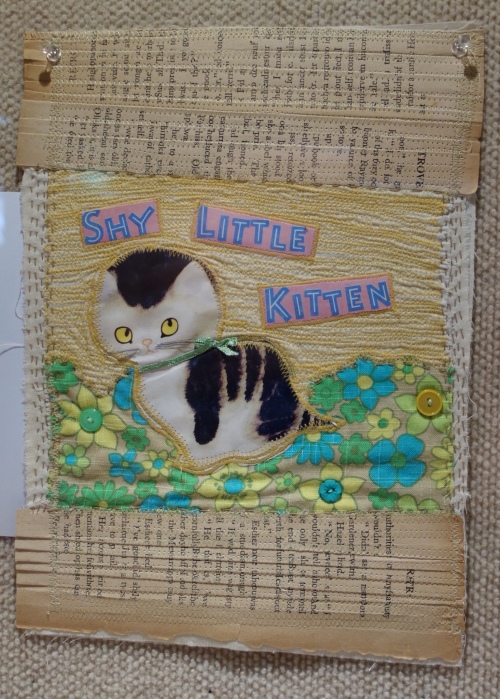
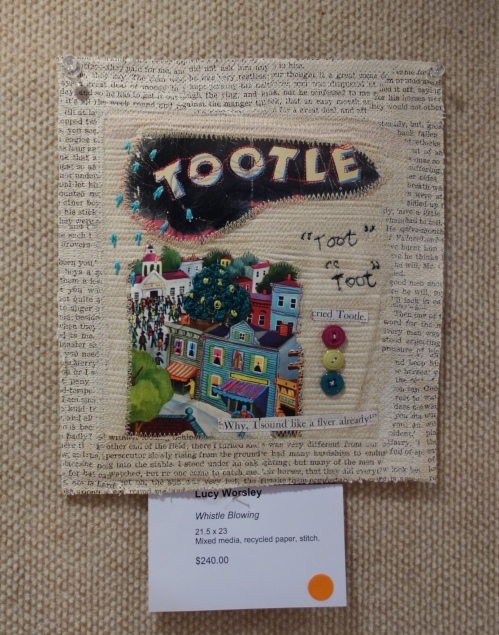
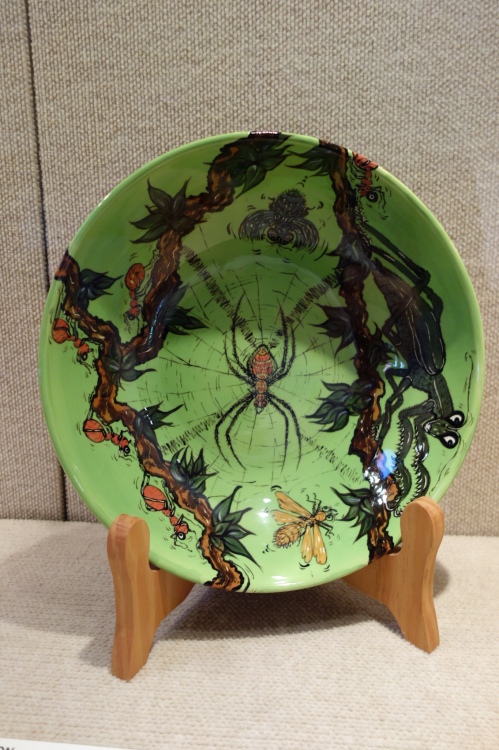

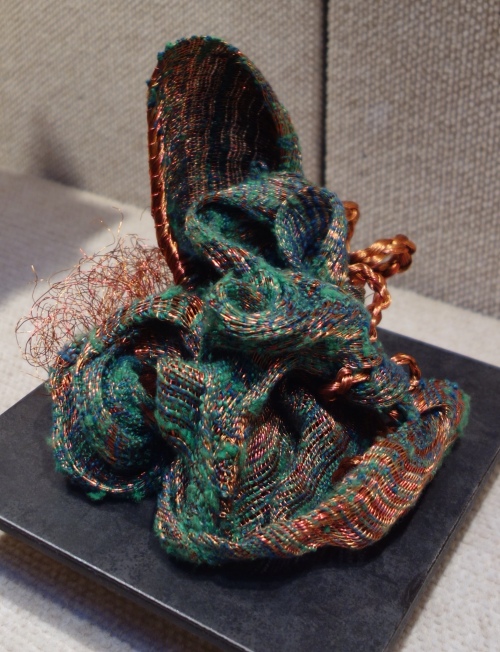

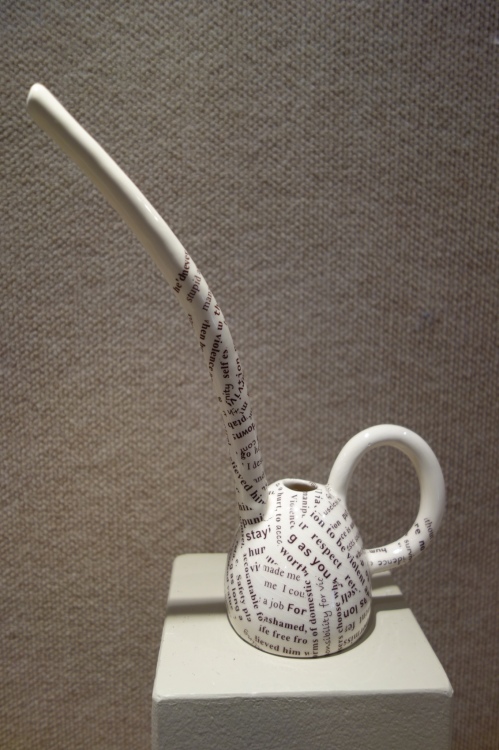



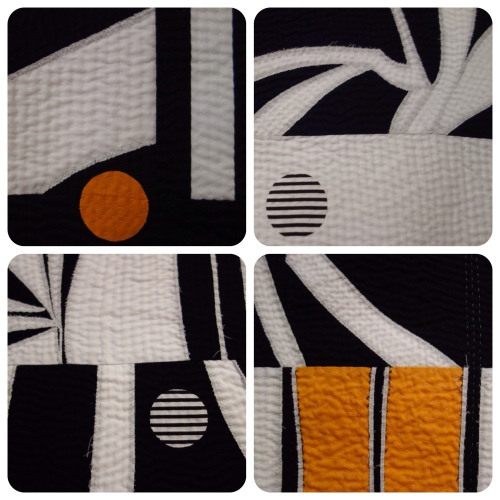

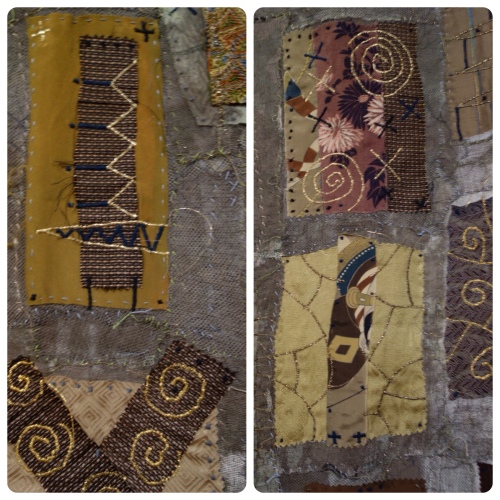





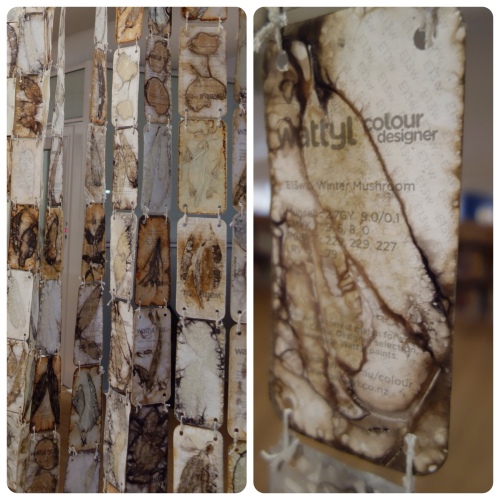
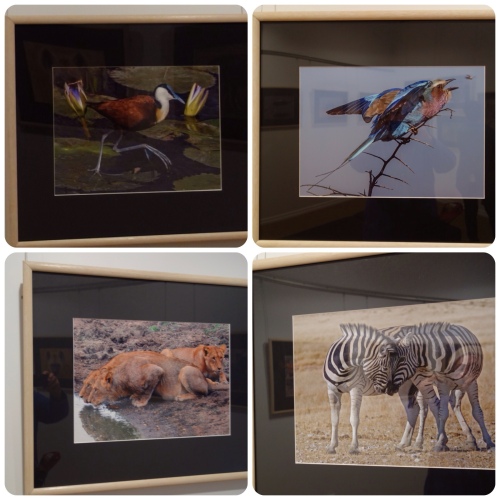





Not a wasted day at all Meg, and there will be plenty of sunny days to come according to the weather forecast. My favourite was the “landscape” plate, such rich, vibrant colours. And I’m like Jo and keep scrolling up and down as I read other peoples comments, definitely an age thing. As for craft V art, only a man could make that comment, craft is an exquisite form of art.
LikeLike
The blokes were incandescent with rage when Ellis Rowan, a mere flower painter, won a prestigious prize (that one of them should’ve won) in the late 19th century. I can’t find evidence for that online, but I’m sure I read it in her biography.
I must confess I like being the first to comment, for two reasons: nobody’s said what I want to say, and I don’t feel curious about all the other comments, because there aren’t any.
The weather has been superb here, after the icy spell.
LikeLike
I wonder how some of the bloggers that have a huge community following manage to keep up with all the comments. They must spend all day and half the night on the computer. I must admit I prefer a smaller more select group so that I can really take time to enjoy their posts and comments.
LikeLike
I’m with you. I avoid following up interesting links in case I get snared by fascination. But I love getting lengthy responses with a bit of toing and froing.
LikeLike
Me too… 🙂
LikeLike
These lovely textiles would be equally at home in Newcastle’s Timeless Textiles Gallery. I was particularly drawn to the Morris Mania works, but then I am a devotee of William Morris’ art. These works are a wonderful modern interpretation of that art. By the way, William Morris was an exponent of the Arts and Crafts movement. To him, art and craft were inseparable.
LikeLike
I certainly don’t have a problem with that. I was a bit surprised by the vociferousness of the (male) contender that they were separate things.
LikeLike
A great way to spend time in my opinion. I love the hangings, especially the ones with gold and the silks are stunning. Oh to have such talent!
LikeLike
The silks won my heart by wafting, and delicacy. Oh to have such talent indeed: but the talented need lookers. I’m goodish at that.
LikeLike
I bet Gilly will love this one Meg! And craft vs art? I’d say craft IS art. I like the landscape too. And the quilts, especially your close-up collages. Now that’s art. I’d love the Ruminative nuances on my wall. Love the colours and the textures. I wonder if I could do something like that? I once was interested in quilting – more for the design rather than the sewing. I’m not a huge fan of sewing. But the best? For me is the Morris Mania. How wonderful is the delicate tracery, the natural earthy colours, the sheer beauty of nature. I hope everyone reading this enlarges your images, especially these ones. Not a wasted day at all. After all you have lots of nice days.
LikeLiked by 1 person
Ruminative nuances for me too – so many places to rest the eye, a bit like the pattern on a Persian carpet. Thank you for prompting me to enlarge – I wondered how this format stood up to scrutiny – and never thought to look! I quilted by pattern 35 years ago when I was expecting H – drove the hospital nuts with little threads and hexagonal papers. Obviously the man who said “not art” was either stirring, or hadn’t looked closely.
LikeLiked by 1 person
They look great enlarged. I was in danger of spending far too much time scrutinizing the patterns and designs.
LikeLike
Talking about aging! In a longish post I have to keep creeping back up the page to remember what I’ve seen 🙂 🙂 I did like ‘landscape’. Assuming it’s pottery, not stained glass? The latter would be nice. And I liked the batik style one. Now where can I hang one of those wiffly things? I do love textures, Meg 🙂
LikeLiked by 1 person
I think aging too – I have the same problem. My notebook is littered with notes as I read, so I can appreciate without re-reading. Then I think, maybe I’m used to leafing through and haven’t learnt to scroll down properly. The landscape is earthen ware and copper piping. I really enjoy your use of technical language -” whiffly thing” is exactly what it is.
LikeLike
I’ve always been a technocrat! 🙂
LikeLiked by 1 person
I, too, agree about the leaf mobile….. Delicate, lovely. I have to say, I do feel I should be outside on a sunny day, something I think that was instilled into me from a young age!
LikeLike
Looks like a fun day out – definitely not a waste. I agree with you about the hanging mobile of leaves. It stands out from the rest.
LikeLike
But such rare sunshine!!!
LikeLiked by 1 person